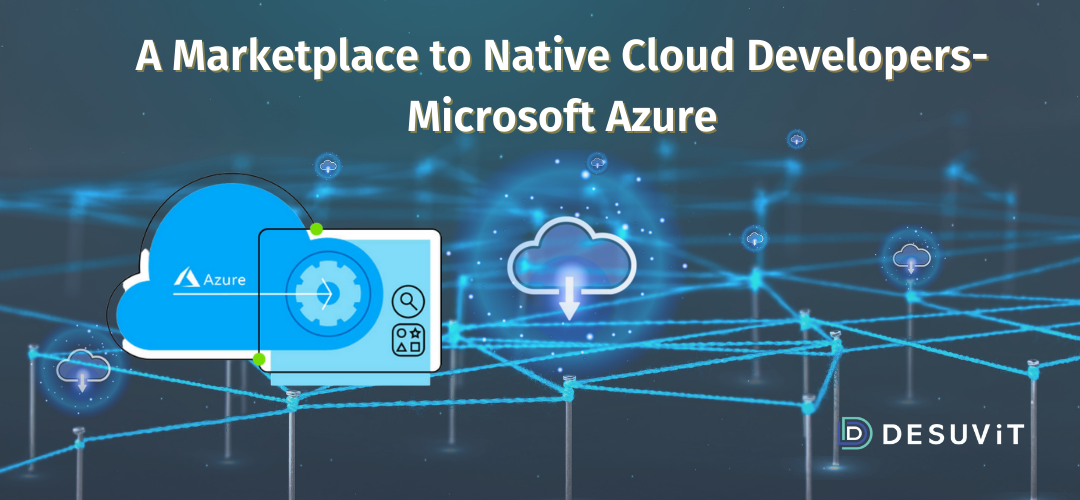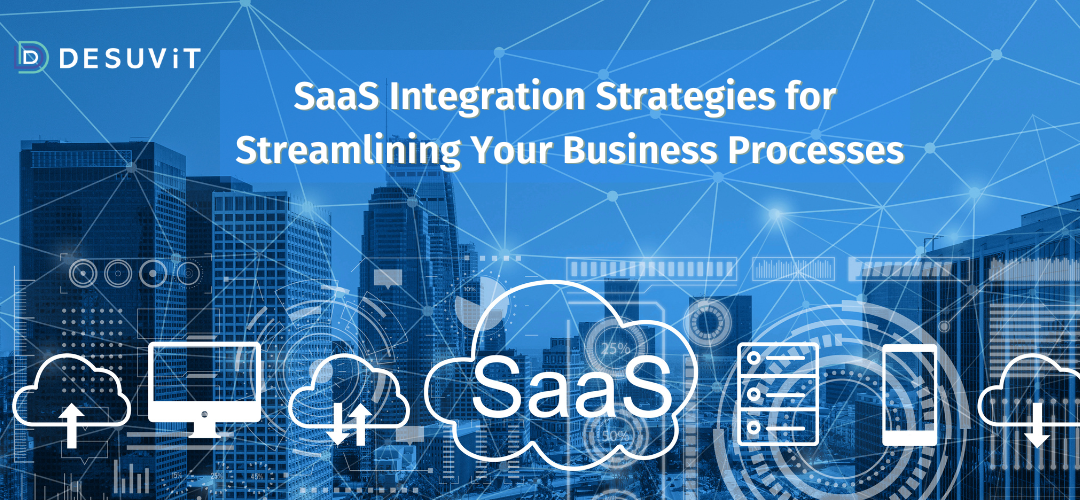Modern application development is made possible by cloud-native services, which leverage tools like Kubernetes, Docker, serverless functions, APIs, and Kafka. Industry-leading cloud providers make it possible for developers to reduce operational responsibilities and create applications more quickly by enabling cloud tooling and services.
These techniques modernize your existing applications with minimal interruption using Azure services. Learn more about Cloud Computing to understand how Azure technologies can build modern applications scale easily, achieve resilience and employ DevOps practices.
Let us understand why Native Cloud Development is today’s most significant trend in the industry!
Cloud-native is designed to adopt Azure services to build new cloud-native apps and modernize current applications seamlessly on a flexible and open platform. It also solves modernization tasks most of and time efficiently while allowing you to explore cutting-edge technologies.
What are Cloud-Native Applications?
Applications designed specifically for the cloud and optimized for its scalability and performance are called cloud-native applications. They utilize managed services, are built on microservices architectures, and leverage continuous delivery to increase dependability and shorten time to market.
Benefits of Cloud-Native Strategy
- Best of technology: Design and develop your cloud-native apps with fully managed Azure services, development tools that are seamlessly integrated, and built-in, business-grade security. Implement a microservices-based, cloud-native architecture while using the tools and technologies of your choice to make it simpler to create and scale your apps.
- The right tools: Utilize the best tools for your business needs, such as SDKs and development tools from Microsoft and others, to innovate on an open platform. You can construct independent services using a framework especially made for distributed systems, containers, or a serverless method owing to the variety of Azure offers.
- Productive application lifecycle: Utilize integrated tools and DevOps to efficiently complete an end-to-end development experience, including coding, debugging, deployment, monitoring, and management. Create automated continuous integration and delivery (CI/CD) pipelines to release new features while quickly preserving high performance and availability.
- Build secure and resilient applications: Build your apps in Azure with microservices, containers, and serverless functions to disassociate the effects of errors, security breaches, and updates.
Let us look at some of the Azure Native applications:
What are Microservices?
An architectural method for creating systems called microservices separates the development and deployment of each fundamental component, for instance, a service. Because microservice architecture is decentralized and loosely connected, the loss of one component won’t render the entire application unusable. Together, independent components use clearly specified API contracts for communication. Create microservice applications to quickly implement new features and adapt to changing business needs.
Here are Azure Native Solutions to support the Microservice architecture
Azure Kubernetes Service (AKS)
With the ability to innovate, deploy and operate Kubernetes seamlessly, Azure Kubernetes Service makes the fastest approach to begin creating and deploying cloud-native applications in Azure, datacenters, or at the edge. It is built-in pipelines and barriers from code to the cloud. Kubernetes clusters on-premises, at the edge, and across several clouds can all be managed and governed in one place. It works together with Azure’s migration, cost management, security, and identity services.
Azure Red Hat OpenShift
With the ability to build, deploy and scale applications, Azure Red Hat OpenShift offers highly available, fully managed OpenShift clusters supervised and run jointly by Red Hat and Microsoft. The foundation of Red Hat OpenShift is Kubernetes. Kubernetes is enhanced by OpenShift with additional capabilities, turning it into a fully functional container platform as a service (PaaS) with a vastly improved developer and operator experience.
Azure Container Applications
Publish apps that are containerized without handling complicated architecture. Create microservices with complete support for Distributed Application Runtime by writing code in your chosen programming language or framework (Dapr). Powered by Kubernetes Event-Driven Autoscaling (KEDA), it scales dynamically based on HTTP traffic or events.
Container Inventory
With a fully managed, geo-replicated instance of Oracle Cloud Infrastructure (OCI) distribution, you can create, store, secure, scan, replicate, and manage container images and artifacts. Connect with other environments, such as Azure Red Hat OpenShift and Azure Kubernetes Service, as well as Azure services like App Service, Machine Learning, and Batch.
Container Services
You can build microservices apps to give value to your users more quickly and reduce expenses by moving your existing applications to containers. For the development, maintenance, and deployment of your containerized apps, use end-to-end developer and CI/CD tools. Utilize a fully managed Kubernetes container management and orchestration solution that connects with Azure Active Directory to manage containers at scale. Accelerate the creation of containerized applications while maintaining your security standards wherever you are in the app modernization process.
You can find the Azure service for your container requirements:
- Deploy and scale containers on managed Kubernetes
- Deploy and scale containers on Red Hat OpenShift
- Build and deploy modern applications and microservices through serverless containers
- Execute event-driven, serverless code with end-to-end development experience
- Run containerized web applications on Linus and Windows
- Launch containers with hypervisor isolation
- Deploy and operate scalable, distributed apps
- Create, store, secure, and replicate container images and artifacts
Serverless Computing
By reducing the time and money you spend on infrastructure-related tasks, you can add more value to the core of your business. To increase developer productivity, optimize resources, and quicken the speed of innovation, use fully managed, end-to-end Azure serverless solutions.
Why Azure Serverless Solutions?
Increased developer efficiency: By relieving developers of infrastructure provisioning and management, businesses can spend less time on activities that are not essential to their operation. Use ready-to-use machine learning and cognitive models, low-code/no-code services, and developer-friendly APIs to build and deploy applications more quickly.
Increased team productivity: Utilize a fully managed platform to create, distribute, and run apps to increase team agility and performance. Build for any hybrid, cloud, or edge environment and application pattern. Use savvy monitoring and analytic tools to manage applications actively.
Increased organizational impact: Azure serverless solutions can help your business clear the way for innovation and new income opportunities, speeding up time to market. You can reduce the total cost of ownership of your infrastructure and reduce risk with intelligent security management and enhanced threat protection.
Azure Serverless Functions
Azure Functions accelerates and simplifies serverless application development. It is an event-driven, serverless computing platform that aids in the resolution of challenging orchestration issues and might help developers work more effectively. You can utilize languages you’re already familiar with thanks to the Azure Functions end-to-end programming experience. Build and debug locally without further setup, scale deployment and operation on the cloud, and bind and trigger services.
Other Azure Cloud Native Solutions
Azure Service Bus (ASB)
It is a Microsoft cloud-based messaging service that helps connect applications and services across public and private clouds. It provides a secure and reliable way to communicate with applications and services, allowing them to exchange messages with each other in a distributed, asynchronous manner. It supports a variety of messaging protocols and can be used to build complex solutions that require reliable and secure communication.
Managed SQL Databases
It provides a secure and reliable way to store, manage, and access data. It is a cloud-based database service that automates many of the administrative tasks associated with traditional database management systems, such as setup, patching, backups, and scaling. It also provides high availability and disaster recovery capabilities, as well as monitoring and analytics tools, to help ensure that data is always secure and accessible.
Azure Cosmos DB
You can develop high-performance applications of any size or scope with a fully managed and serverless distributed database that supports free and open-source PostgreSQL, MongoDB, and Apache Cassandra. SLA-backed single-digit millisecond reads and writes and availability for NoSQL data provide automatic and immediate scalability. Utilize distributed PostgreSQL’s most recent version, tools, and extensions to deploy and scale applications.
Azure API Management
Innovative businesses today are implementing API architectures to hasten growth. You can streamline your work across hybrid and multi-cloud setups by managing all of your APIs in one location.
Wrapping Up
Businesses can think beyond the confines of their on-premise infrastructure owing to cloud-native application strategies, providing enterprise mobility, 24/7 availability and accessibility, improved connection, and scalability.
Therefore, it wouldn’t be inaccurate to claim that achieving true business agility depends on the cloud-native application architecture. Additionally, it promotes corporate expansion and aids in adjusting to the new normal. Learn more about cloud services with Cloud Computing Training and gain expertise to excel in the domain as an expert practitioner.
Desuvit is a Norway-born software development company delivering Custom Software Development, Mobile Apps, and Web Applications Development for various verticals and business domains. We offer end-to-end solutions for companies with no software or IT division, Startups, and companies that need to scale their software development efforts but lack the expertise required. We help our clients in growing their businesses so we can grow with them. Some of the technologies we work with: .Net, Azure, Microservices, Azure functions(Serverless computing), React Native, Flutter, React JS, TypeScript, Angular, NServiceBus, Azure Service Bus, Azure Queues, SQL Service, MySQL, Cosmos DB, etc.
Enjoyed this article? Subscribe for more valuable and great content !
By subscribing, you agree with our privacy policy and our terms of service.






